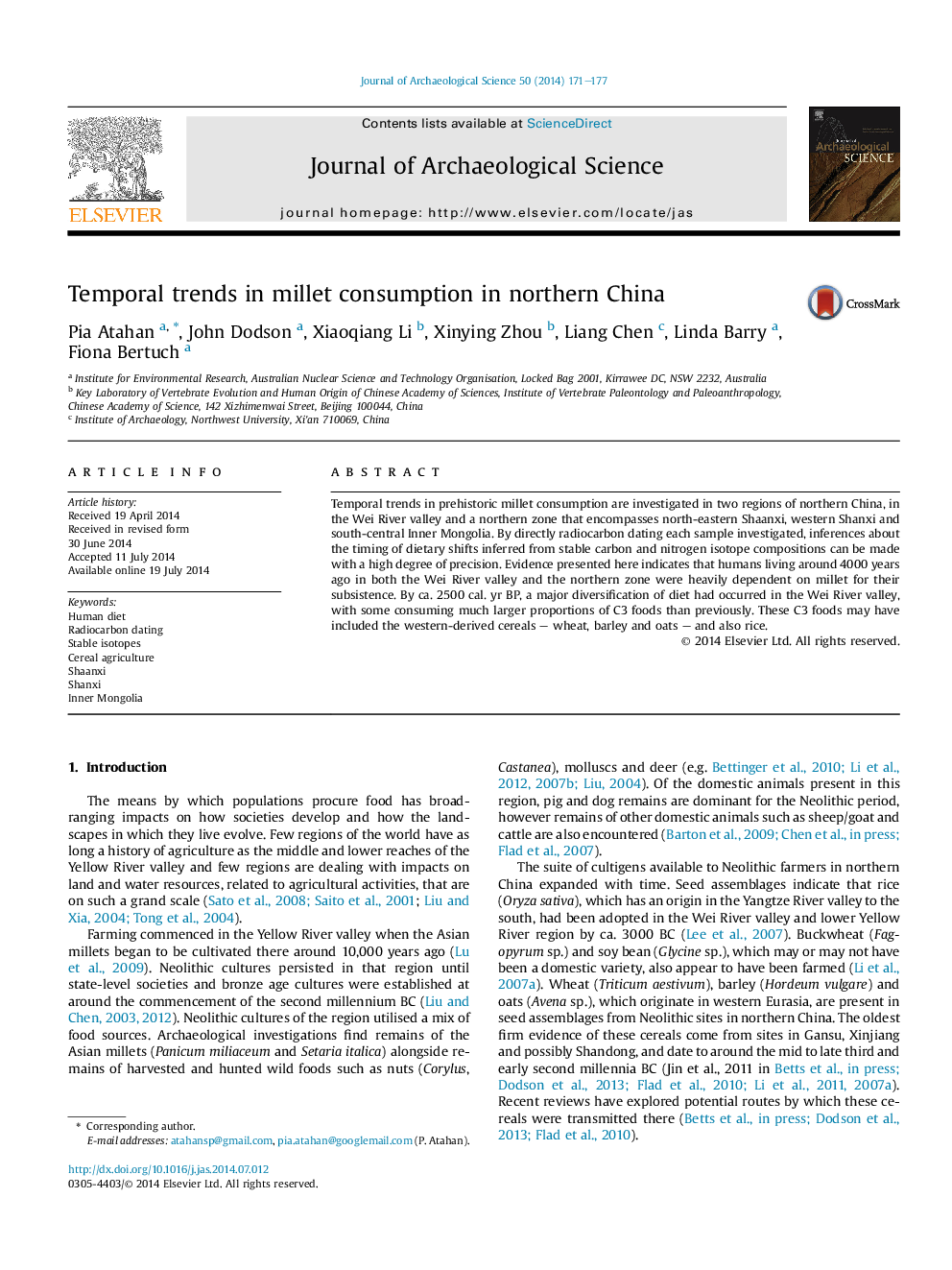| Article ID | Journal | Published Year | Pages | File Type |
|---|---|---|---|---|
| 7442918 | Journal of Archaeological Science | 2014 | 7 Pages |
Abstract
Temporal trends in prehistoric millet consumption are investigated in two regions of northern China, in the Wei River valley and a northern zone that encompasses north-eastern Shaanxi, western Shanxi and south-central Inner Mongolia. By directly radiocarbon dating each sample investigated, inferences about the timing of dietary shifts inferred from stable carbon and nitrogen isotope compositions can be made with a high degree of precision. Evidence presented here indicates that humans living around 4000 years ago in both the Wei River valley and the northern zone were heavily dependent on millet for their subsistence. By ca. 2500 cal. yr BP, a major diversification of diet had occurred in the Wei River valley, with some consuming much larger proportions of C3 foods than previously. These C3 foods may have included the western-derived cereals - wheat, barley and oats - and also rice.
Related Topics
Physical Sciences and Engineering
Materials Science
Materials Science (General)
Authors
Pia Atahan, John Dodson, Xiaoqiang Li, Xinying Zhou, Liang Chen, Linda Barry, Fiona Bertuch,
